Air Departure Tax reduction in Scotland: noise impact assessment
Potential impact on noise levels of our plans to reduce the overall burden of Air Departure Tax (ADT) by 50%.
Appendix A. Noise Modelling Methodology
A.1. Aircraft Noise Modelling Software
A.1.1. The US Federal Aviation Authority produces the Integrated Noise Model (INM) which was developed by the US Federal Aviation Administration and is approved for use in producing strategic noise maps for compliance with the END. The INM is a computer model that generates data on aircraft noise levels in the vicinity of airports. It is developed from the algorithms and frameworks for calculation of aircraft noise outlined in the SAE-AIR-1845 document[34] , which complies with the calculation method set out in ECAC Doc 29, 3rd Edition[35] and ICAO Doc 9911[36] which set out a standard method for computing aircraft noise.
A.1.2. The INM uses Noise-Power-Distance (aircraft noise level at ground height as a function of distance) data to estimate noise levels, accounting for the typical operational mode, engine thrust setting, source-to-receiver geometry, acoustic directivity and other environmental factors. The INM can calculate exposure, maximum-level and time-based noise contours, as well as levels at pre-selected locations. The INM contains an extensive database of the noise attributes of aircraft, and is flexible enough to allow data from new aircraft or aircraft types to be inserted.
A.2. Aerodrome Layouts and Flight Paths
A.2.1. The National Air Traffic Services website[37] provides information on aerodrome layouts and flight paths. Figures showing flight paths for each airport are presented in Figures A.1 to A.5.
A.3. Method for Determining Baseline Air Traffic Movements
A.3.1. Aircraft flight logs for the 2016 baseline year were obtained for each airport. Analysis of flight logs was undertaken to define representative baseline fleets. The analysis provided the number of annual Air Traffic Movements (ATMs) for each aircraft variant attributed to each runway at the respective airports. The exception to this was for Inverness Airport where 2016 ATM data did not contain specific variants of aircraft but contained information on aircraft type (e.g. twin engine turbo-prop, twin engine business jet, twin engine business jet etc.), movement type (e.g. scheduled service, freight/cargo, military etc.), flight number and aircraft registration.
A.3.2. To obtain a representative fleet for Inverness Airport, analysis of 2016 ATM data was undertaken by identifying each aircraft type within each movement type group. Flight numbers and aircraft registration information were used to identify the most common aircraft variants for each aircraft type. To simplify the process for piston aircraft, it was considered all types of these aircraft were comparable to a Cessna 172.
A.3.3. To simplify 2016 ATM data for all airports, it was considered that aircraft variants that had movements on any runway that were less than an average of 0.25 per day were discarded from the list of aircraft variants operational at each airport as, in terms of daily movements, these aircraft were not considered significant. For Prestwick Airport, the significance level was reduced to an average of 0.1 movements on a runway per day as, due to the comparatively low number of daily ATMs, it was found that using an average of 0.25 movements per day resulted in the omission of a significant number of aircraft. The ATM data for discarded aircraft was distributed among the study fleet so the baseline of the total movements for the representative fleet corresponded with the total movements for all aircraft.
A.3.4. In the 2016 ATM data for Aberdeen and Prestwick airports there was a contribution from military and rotary wing aircraft (relating to the oil industry at Aberdeen and search and rescue at Prestwick). It was agreed that for the purposes of this study these types of movements would not be modelled as military and rotary wing aircraft are non-chargeable under ADT.
A.4. Future Scenario Passenger Forecasts
A.4.1. Passenger forecasts with and without the proposed ADT reduction scenarios have been provided by Peter Brett Associates (PBA). Forecast passenger data covers the years from 2017 to 2022 and was simplified into groups defined by the nationality of the operator to provide a means of correlating passenger numbers with ATMs:
- UK scheduled operators;
- EU scheduled operators;
- Overseas (non-EU) scheduled operators;
- UK charter operators;
- EU charter operators; and
- Cargo/ aeroclub.
A.5. Method for Determining Future Scenario INM Input Data
A.5.1. Future ATMs for each scenario have been calculated with reference to the baseline 2016 ATM data. Aircraft fleets for each airport have been summarised into the operator classes from the 2016 ATM data. This was achieved differently for each airport depending on the format of the baseline data.
A.5.2. Aberdeen Airport provided information on aircraft origin and destinations so, depending on the aircraft variant, the applicable aircraft group has been assumed.
A.5.3. The aircraft types for Edinburgh and Glasgow Airport have been derived through study of 2016 baseline data and identification of the type of aircraft that fleet operators use. Edinburgh and Glasgow Airports provided aircraft call signs in the baseline ATM data which enabled identification of aircraft groups that are operated by significant carriers.
A.5.4. For Inverness Airport, the 2022 baseline was derived from Department for Transport forecasts[38] with different corrections applied to scheduled and non-scheduled services, which were derived using CAA data for 2016[39] .
A.5.5. For Prestwick Airport, all aircraft are operated by Ryanair, who use only Boeing 737-800 aircraft[40] . This meant that all changes in passenger numbers could be assumed to directly affect numbers of this type of aircraft, with no change to the fleet mix.
A.5.6. The stage length represents the assumed distance an aircraft travels when departing an airport. The higher the stage length, the more fuel is required for the aircraft to reach its destination. An aircraft with more fuel is heavier and so requires increased thrust to take-off and the climb-rate will be lower. Consequently, the higher the aircraft stage length, the noisier the aircraft is on departure. It should be noted that on arrival, all aircraft will be low on fuel so all aircraft have a single setting for approach weight. Stage length settings in nautical miles (nmi) for aircraft departures are presented in Table 17.
Table 17 Aircraft Departure Stage Length (Nautical miles, nmi)
| Stage | Stage Length |
|---|---|
| 1 | 0 to 500 nmi |
| 2 | 501 to 1000 nmi |
| 3 | 1001 to 1500 nmi |
| 4 | 1501 to 2500 nmi |
| 5 | 2501 to 3500 nmi |
| 6 | 3501 to 4500 nmi |
| 7 | 4501 to 5500 nmi |
| 8 | 5501 to 6500 nmi |
| 9 | over 6500 nmi |
A.5.7. Stage lengths for each aircraft have been estimated based on the destinations for aircraft at each airport. For example, aircraft from Edinburgh and Glasgow airports may fly to destinations in the Americas and Middle East so the larger aircraft required have been assigned a higher stage length to account for longer flights. In comparison, destinations from Aberdeen and Prestwick airports that are short-haul flights to domestic or EU locations were assigned lower stage lengths. It is assumed that the destinations that aircraft operators will provide services to will remain consistent for future scenarios. Consequently, the stage length is consistent for all scenarios and only the change in daily average ATMs affects the extent of noise contours.
Figure A.1 Aberdeen Airport Flight Paths
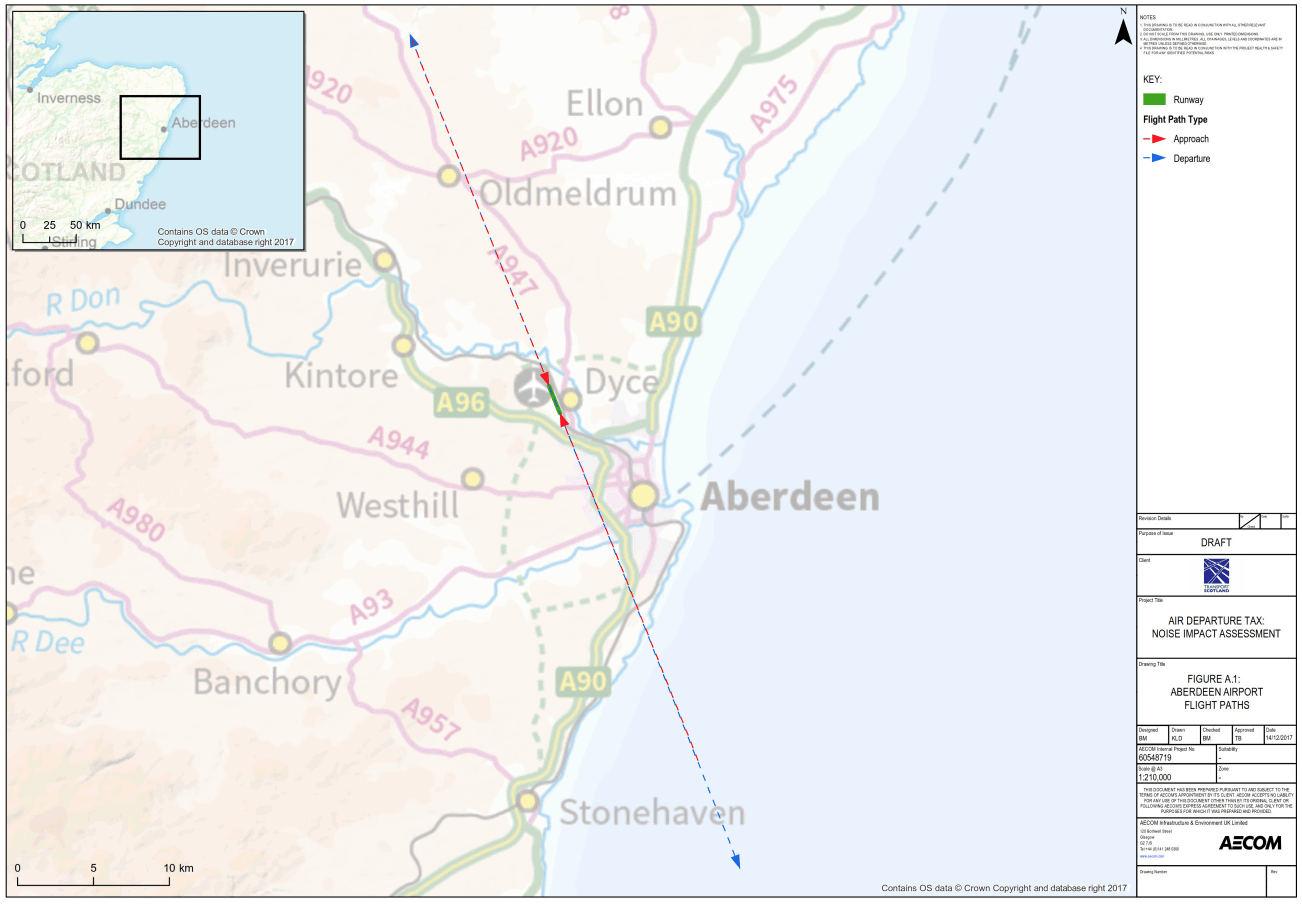
Figure A.2 Edinburgh Airport Flight Paths
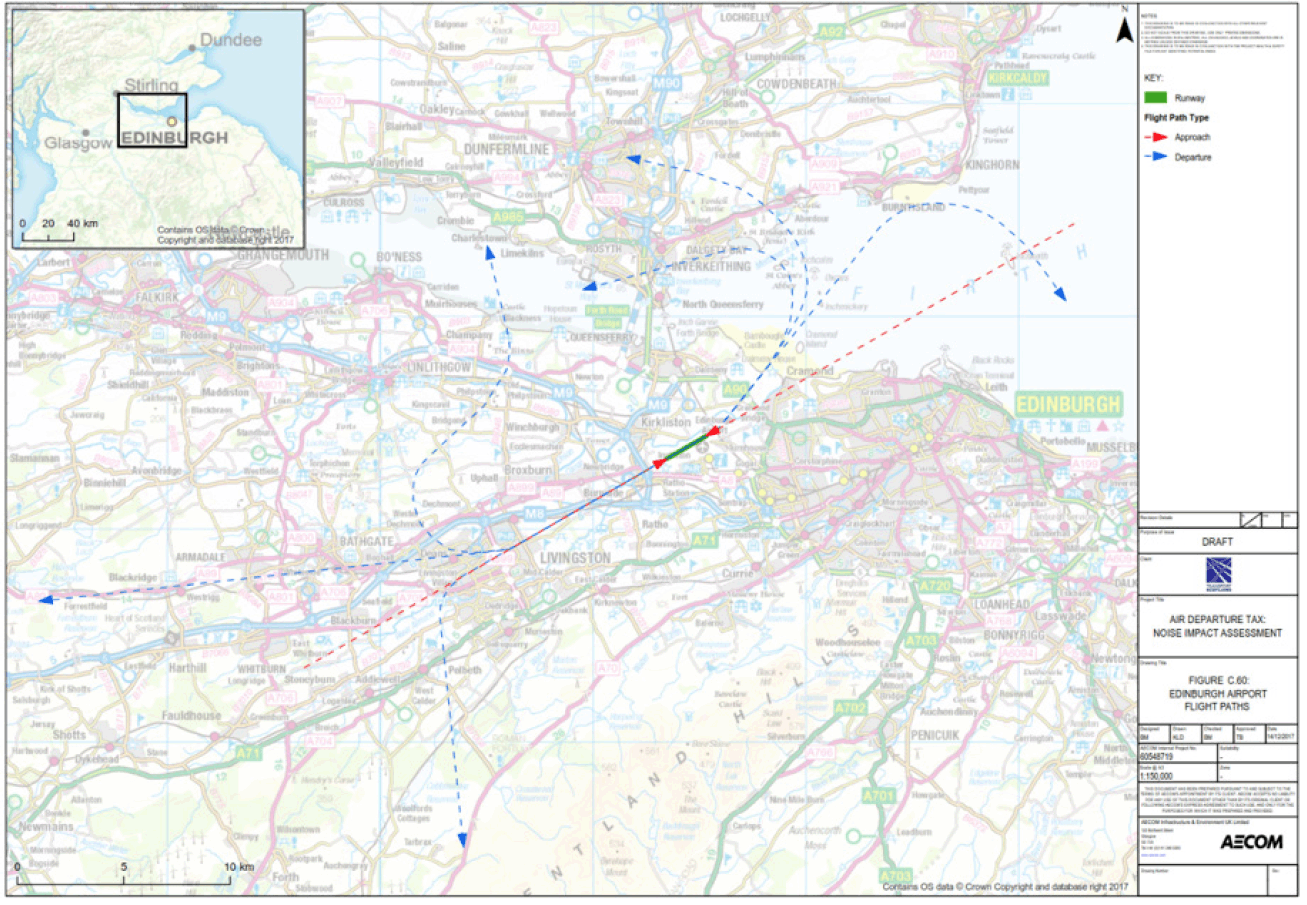
Figure A.3 Glasgow Airport Flight Paths
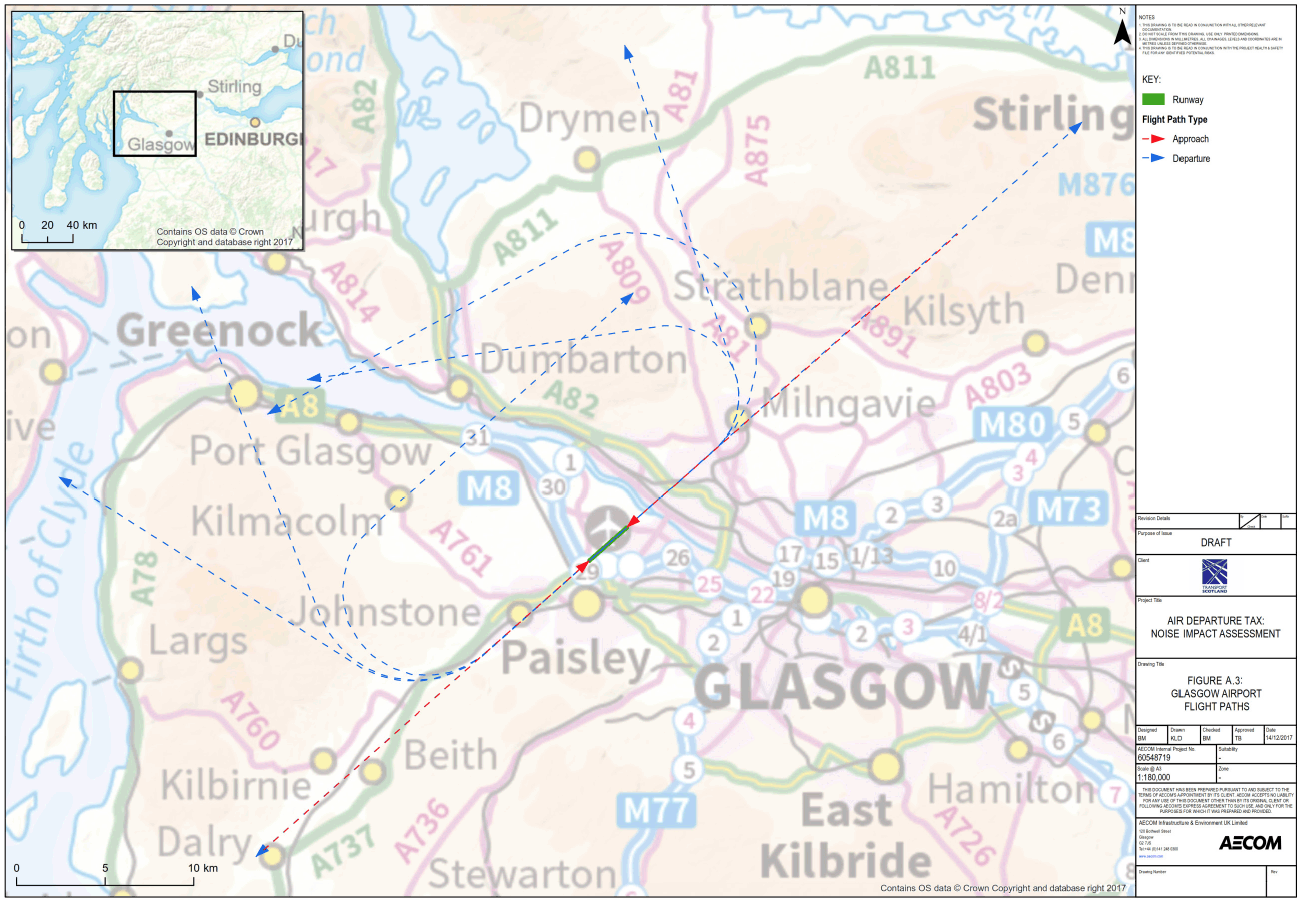
Figure A.4 Inverness Airport Flight Paths
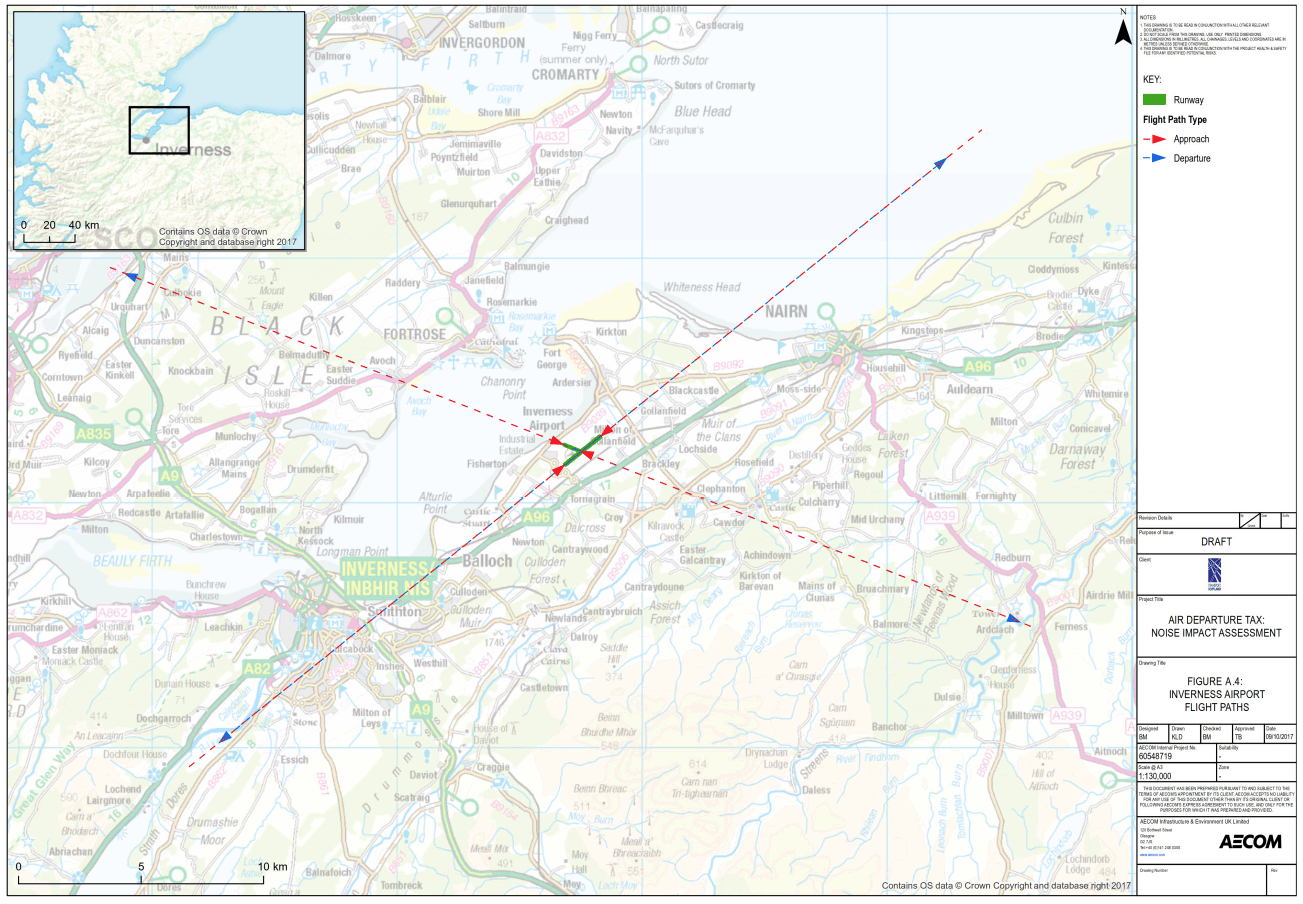
Figure A.5 Prestwick Airport Flight Paths
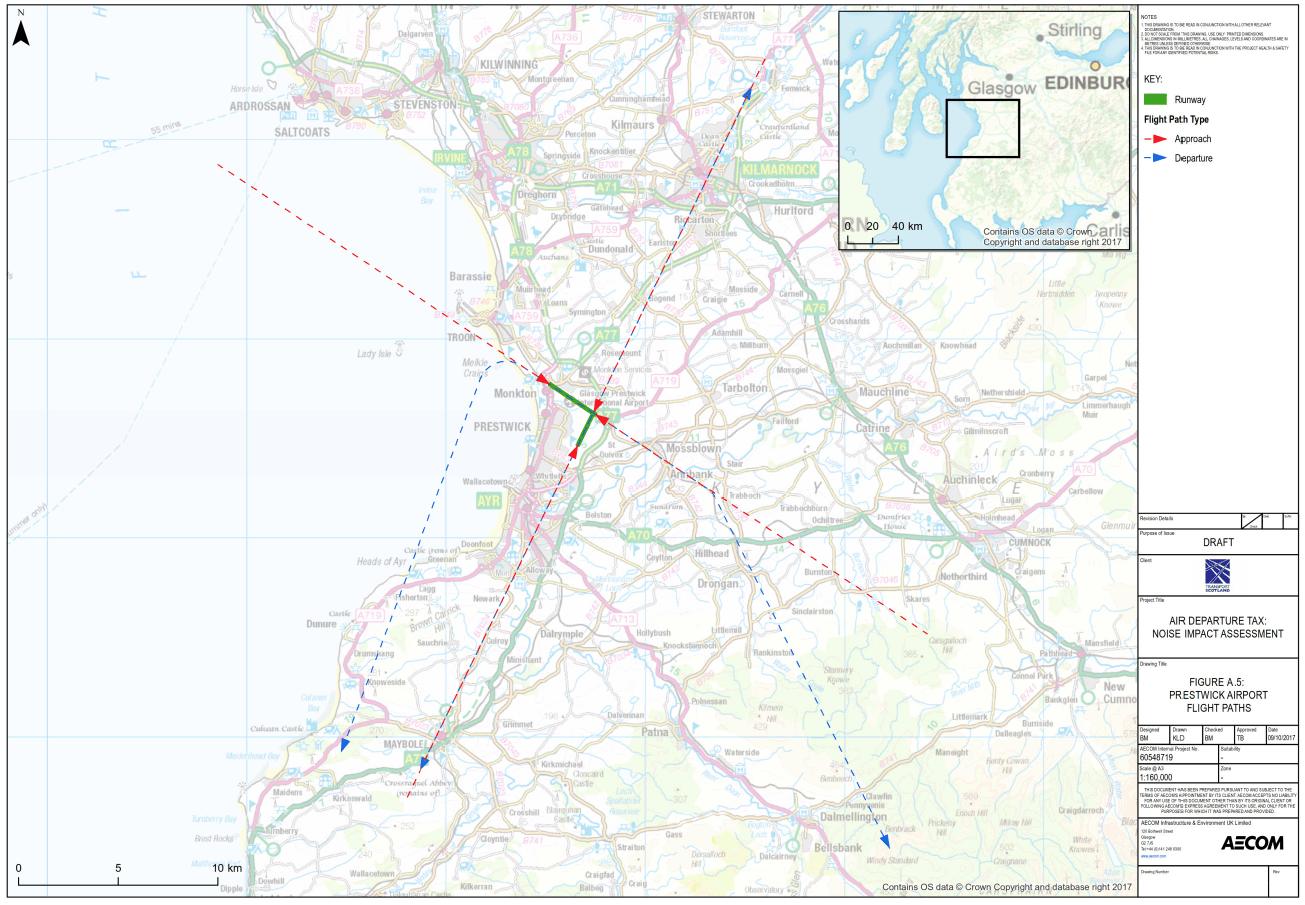
Contact
Email: adt@gov.scot
There is a problem
Thanks for your feedback